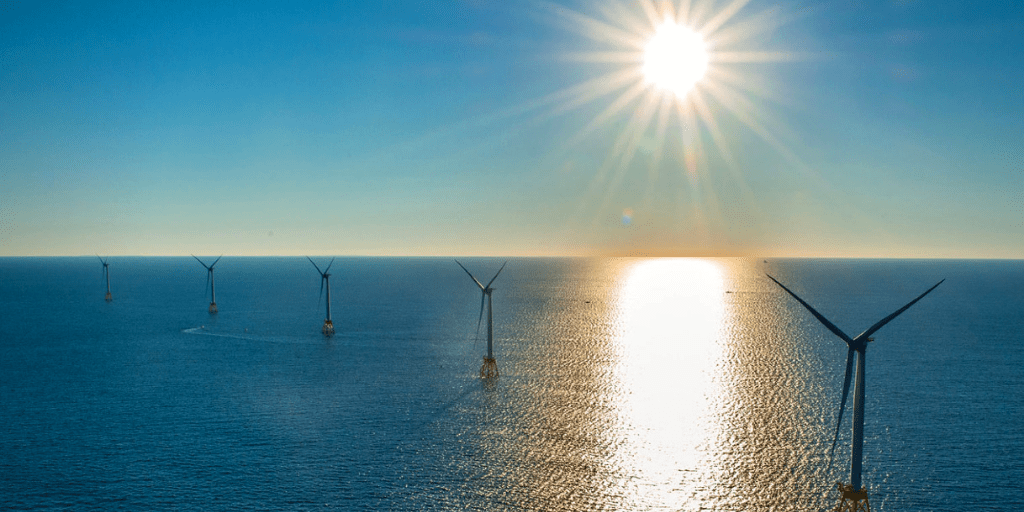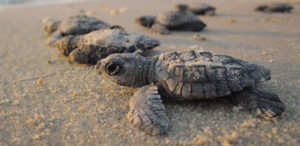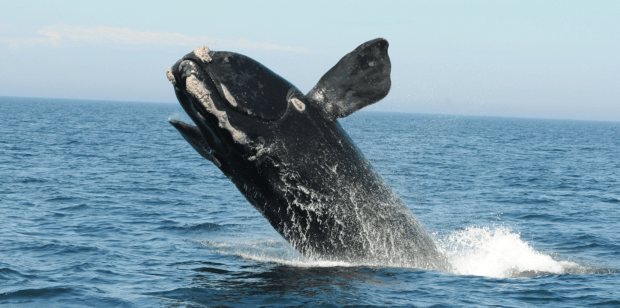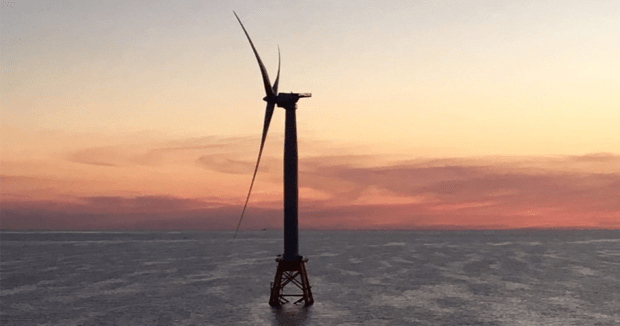We have much more to do and your continued support is needed now more than ever.
Offshore Wind Power: A Clean Energy Victory for Wildlife!

Virginia to Build the First Two Offshore Wind Turbines in Federal Waters
For years, states along the Atlantic Coast have been striving to get offshore wind turbines built in federal waters. 2018 has been rich with progress, particularly in the Northeast region, but no state has yet won the race to be first. Though Virginia has hardly been a front-runner to date, a recent turn of events put Dominion Energy on track to pioneer construction within the next year.
Earlier this month, Virginia’s State Corporation Commission approved a two-turbine demonstration project, Coastal Virginia Offshore Wind (CVOW), to be built 27 miles from shore. CVOW is a collaboration between Dominion Energy and the leading global offshore wind developer, Ørsted. The project will generate 12 megawatts (MW) of clean energy – enough to power 3,000 homes in the Commonwealth – and will provide lessons to hopefully inform larger offshore wind development in the years ahead.
In 2013, the U.S. Department of the Interior auctioned a 112,800 acre area of federal waters designated for offshore wind development just over 23 miles off of Virginia Beach, and Dominion placed the highest bid. For the five years since, Dominion has cited concerns about the high cost of offshore wind energy as reason for postponing build-out of the wind energy area – ultimately capable of supplying power to more than half a million homes. In the meantime, areas of federal water have been leased, spanning from Massachusetts to North Carolina, and states are grappling to figure out exactly how to seize the massive opportunity within them.
Wildlife and Offshore Wind

Rising sea levels brought on by climate change are eroding beaches and destroying the critical nesting grounds Kemp’s ridley sea turtles rely on to lay their eggs. All along the coast, similar impacts are threatening species like piping plovers and Florida Key deer. Currently, carbon-emitting coal plants and other fossil fuel-generated energy are contributing heavily to climate-disrupting carbon pollution. But with renewable energy like offshore wind power, we can reduce our contribution to climate change and protect the critical coastal habitats sea turtles need to survive.
The National Wildlife Federation is committed to ensuring that as offshore wind power moves forward, the highest standards of wildlife protection are in place every step of the way. Because offshore wind power is new to the nation, we have the opportunity to do this right from the start. NWF is working closely with developers, state and federal government officials, conservation partners, and many ocean users to ensure that wildlife and habitat protection is considered at every decision point, from siting to construction, and ultimately during operation and maintenance of offshore wind projects.
The scale of the challenge and the opportunity
Offshore wind power is America’s largest untapped clean energy solution. The gradually sloping continental shelf and strong, consistent wind speeds make the U.S. Atlantic Coast home to one of the world’s most ideal sites for offshore wind power development. On top of that, the resource is in close proximity to the strained urban energy markets that dot our coastline – it’s abundant, clean energy right where we need it most. And with strict measures in place to avoid, minimize, and mitigate impacts to the surrounding ecosystem, offshore wind power has the potential to be among the most wildlife-friendly energy resources within reach. Harnessing just a fraction of the potential offshore could replace carbon-polluting power plants dominating our energy profile and driving climate change.

European nations have been building offshore wind turbines and advancing their technology for nearly three decades – and they now host a collective total of over 4,000 turbines powering millions of homes and businesses with clean, local energy. Finally, in 2016, Rhode Island managed to install America’s first five turbines. The Block Island Wind Farm stands in state waters, which typically extend three miles from a coastline. Beyond three miles (where the wind is often stronger and more consistent), falls under federal jurisdiction and requires coordination between state and federal officials, offshore wind developers, ocean users, and members of the public for any development to move forward. That is an orchestra no one has yet to successfully conduct – but many states are getting close.
Massachusetts, New York, New Jersey, Connecticut, Rhode Island, and Maryland are all at various stages of getting a project in the water. The list of incentives is long. Offshore wind power can help states meet urgent greenhouse gas reduction targets. It will create thousands of jobs in-state and in the surrounding region – the industry supports 80,000 jobs in Europe. And once projects make up a significant portion of a state’s energy mix, they will help buffer ratepayers from spikes in the volatile fossil fuel market.
Taking on as transformative an endeavor as offshore wind development has the potential to be requires foresight. It requires early investments in research, stakeholder engagement, infrastructure development, and workforce training. It has to be done right, with stringent measures in place to protect marine and coastal wildlife and habitat every step of the way.

The challenge is great, but the opportunity is greater. Finding a path forward holds immense environmental and economic promise, and will likely inspire other states to follow. Virginia is forging a path different than that of any other state leading the way – and it looks like this path will get us 3,000 homes closer to a clean energy future by 2020. We’ll take it. And we look forward to working closely with Virginia’s leaders ensure that these first two turbines clear the way for many more to follow. Communities, wildlife, and wild places are counting on us getting this right and going big, sooner rather than later.





















